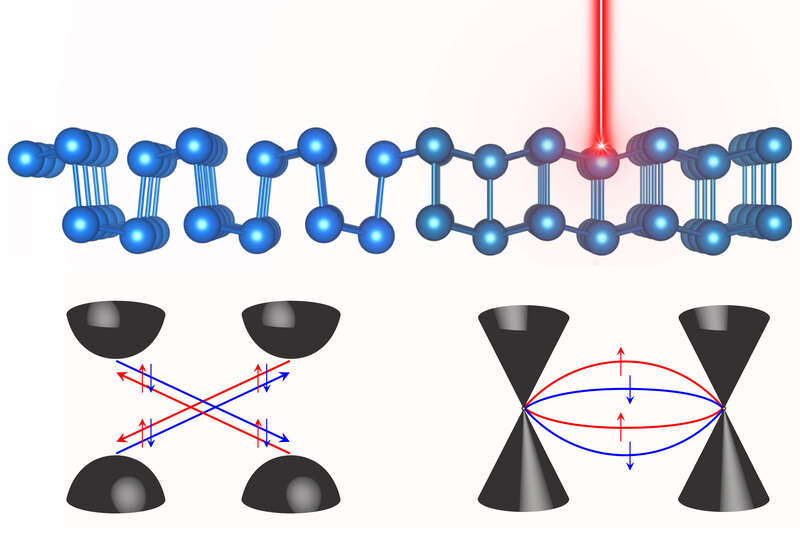Research Highlights
Photon, electron, spin, topology
Ultrathin bismuth is a promising material for quantum technologies. Researchers have now discovered that light can be used to switch ultrathin bismuth between six different structural forms, each with unique topological electronic and spin properties. This discovery opens up the possibility of ultrafast control of electronic and spin properties in quantum materials using light, which could have far-reaching implications for next-generation technologies such as low-power electronics and quantum computing.

Ultrathin bismuth exhibits rich physics including strong spin-orbit coupling, ferroelectricity, nontrivial topology, and light-induced structural dynamics. Light can be used to control both structural and topological properties of ferroelectric and paraelectric bismuth monolayers. Varying the photoexcited carrier density and electronic temperature, four previously unreported transient inversion symmetric phases are stabilized. Based on a spin band structure analysis to characterize the topological properties, the two dark phases are found to exhibit different quantum spin Hall insulating behavior with different spin Chern numbers. Remarkably, photoinduced phase transitions drive the ferroelectric and paraelectric phases into 2D Dirac and nodal-line semimetals, respectively, each with distinct topological edge states.
Photoinduced electronic and spin topological phase transitions in monolayer bismuth
Physical Review Letters
132,
116601
(2024)